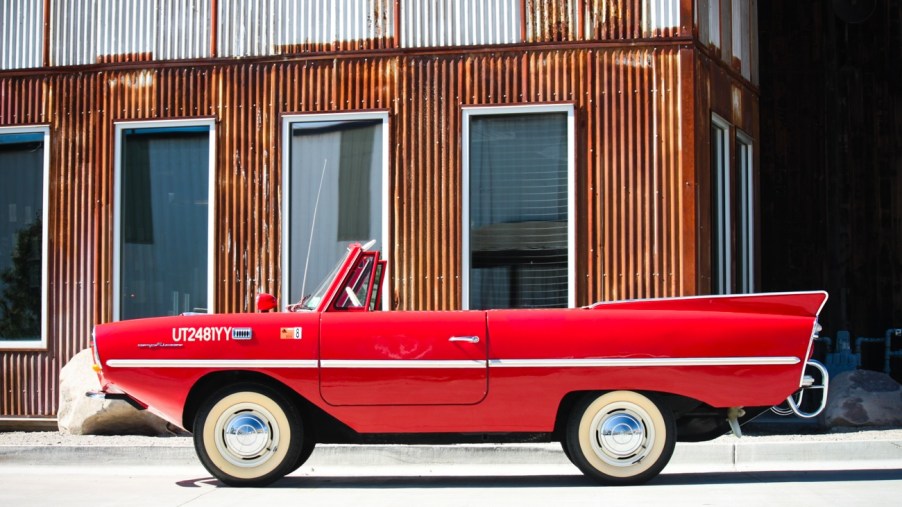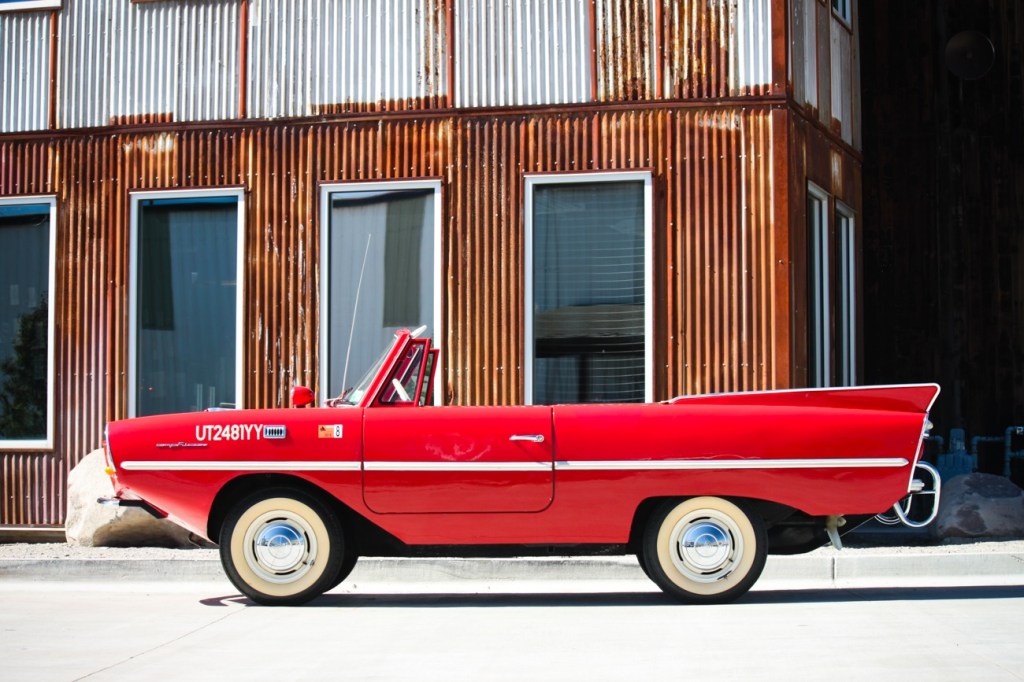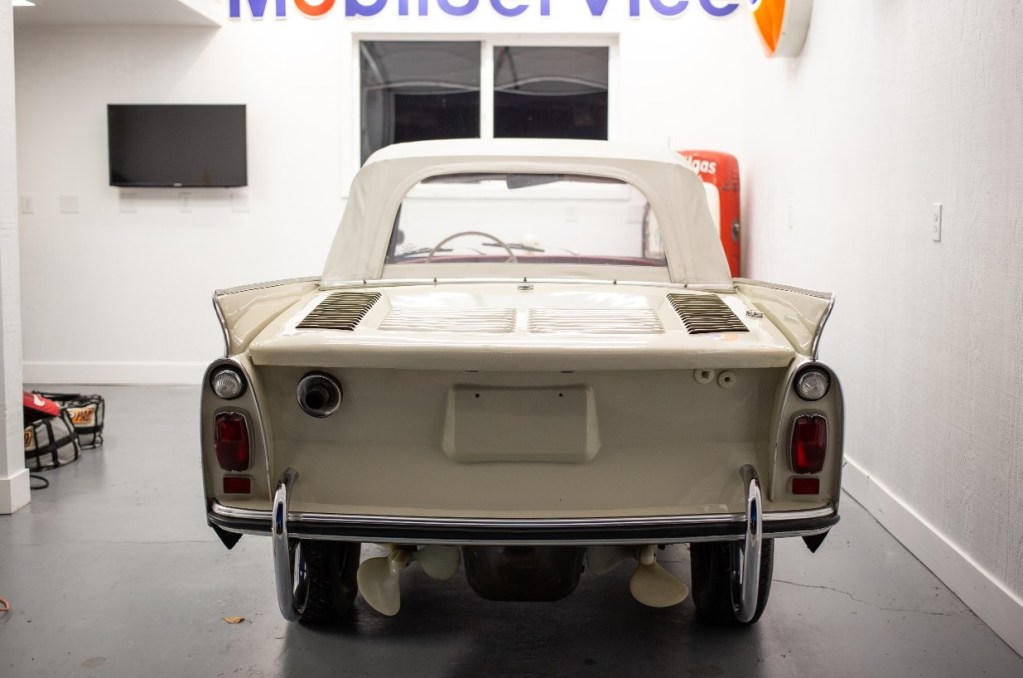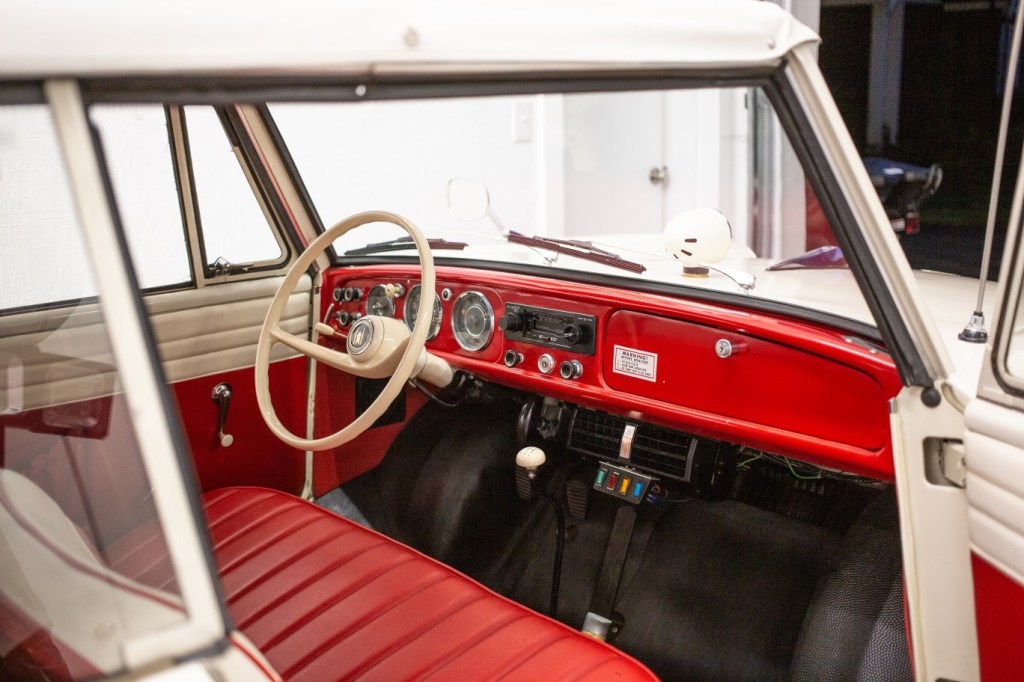
The Amphicar Lets You Safely Drive in and Take a Swim
Amphibious cars and vehicles are usually the purviews of military organizations or eccentric one-offs. To be sure, there are some wheeled vehicles that can cross water. However, while the Sherp ATV can genuinely drive across a river, it costs $100,000 and isn’t street-legal. And while the Rokon Trail-Breaker and Ranger motorcycles can float, you can’t ride them across a lake. But there was one amphibious car you could genuinely buy straight from the showroom floor: the Amphicar.
What is the Amphicar?

Officially, it’s called the Amphicar Model 770, Hagerty reports. But given its rather unique design, ‘Amphicar’ is sufficient.
The Amphicar first debuted, Classic Driver reports, at the 1961 New York International Show. It was the product of West German automotive designer Hans Trippel, who also designed the original Mercedes Gullwing’s doors. His inspiration was the Volkswagen Schwimmwagen, a kind of amphibious Beetle used by German in WWII, Silodrome reports.
The car wasn’t exactly quick. It had a rear-mounted water-cooled 1.1-liter four-cylinder engine from the Triumph Herald sports car, and only put out 43 hp, Bring a Trailer reports. Top speed was 70 mph, the ‘70’ in ‘Model 770.’ But that ‘7’ was the Amphicar’s real party trick.
Is the Amphicar a real amphibious car?
Said ‘7’ stood for ‘7 mph’, the Amphicar’s top speed in the water. And yes, this was a genuinely amphibious car. In fact, The Drive reports it’s still “the only mass production amphibious vehicle designed for non-military use.” Late former President Lyndon B. Johnson owned one, and used to scare passengers by driving straight into the water, Gothamist reports.
In addition to being rear-wheel drive, the Amphicar had 2 rear-mounted propellers powered by its engine. When the captain/driver was about to hit the water, they hit a lever, locking the doors and preventing water leaking in. Each Amphicar had to pass a water-proofing test before being delivered.

The front wheels acted as rudders, and the car’s grille was shaped like a boat’s bow. On land, the Amphicar used a 4-speed manual to control the engine. In the water, a separate lever was used to engage forward or reverse drive. The upholstery was also waterproof, Petrolicious reports, and customers could option a paddle and anchor. Plus, because it was technically a boat, it had to be fitted with navigation lights and flag, per US Coast Guard regulations.
Also, these cars/boats were more capable than you might think. As part of a publicity stunt, Trippel had 2 Amphicars cross the English Channel between France and England. Amphicars have also navigated Alaska’s Yukon River, Silodrome reports. And despite its low power output, in 1st gear, the car could climb 43% grades.
Pricing and availability
While the Amphicar was built from 1961-1968, total production numbered 3900, Hagerty reports. Price was one reason for the low production: in today’s money, it would’ve cost $28,500. Plus, many rusted away, due to their steel bodies, saltwater, and lack of proper care. Roughly 500 survive today, The Drive reports.

The relative scarcity, combined with their unique amphibious status, makes them retain value rather well. An excellent condition model, Hagerty reports, can cost about $69,000. The average BaT price is $45,000-$50,000; as of this writing, a 1964 model is listed at $30,500.
That’s not an insignificant amount of money. However, how many other road-legal amphibious cars do you know?
Follow more updates from MotorBiscuit on our Facebook page.


